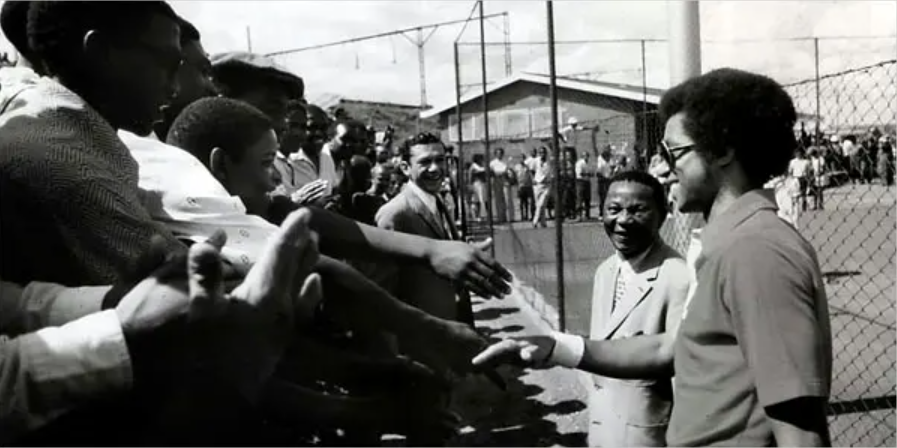Getting the job done between the lines was the easy part. On November 20th, 1973, Arthur Ashe made his first-ever appearance on a South African tennis court, straight-setting a fellow American, Sherwood Stewart.
1973 marked a watershed for the South African Open, as it did in the nation’s sporting scene as a whole. The government loosened its apartheid policies on athletics, if only slightly, by allowing a handful of dark-skinned visitors and permitting a limited amount of interracial competition. The headliners were Bob Foster–an American heavyweight who would fight South African Pierre Fourie in Johannesburg in December–and Ashe.
“Sports is the Achilles’ heel of South Africa,” Ashe said. “Now, I know the government is using me, but I’m using it, too.”
Foster was unabashedly mercenary in his aims. The $200,000 he picked up for the bout was his only interest. He holed up in a hotel room for the duration of his stay, and though he defeated Fourie, he left the country less of a hero to the black population than he had been when he arrived.
Ashe, on the other hand, barely left himself any time for tennis. He met with everyone from local activists to the national Minister of Sports and Recreation. The situation was more complicated than international newspapers made it out to be: Most whites welcomed him (though some admitted they didn’t believe in racial equality), while some blacks objected to his visit, believing it gave credibility to an illegitimate government.
Some things, however, were clear. “It is amazing how few people realize what South Africa really is,” Ashe told Frank Deford, a Sports Illustrated staffer who tagged along. “It is a police state. The greatest, most influential variable here is fear. Wherever I go I see that everybody is afraid.”
The entire trip was, fundamentally, a negotiation. Ashe believed in engagement and recognized that compromise was inevitable. One of the terms he set for his visit was integrated seating at the tennis stadium, and he quickly discovered that his hosts would only go so far. (Tournament director and doubles whiz Owen Williams was stuck in the middle: He may have done more negotiating than anyone.) Some black spectators were given tickets to traditional whites-only area of the grandstand, but the “blacks-only” section remained. Ashe kept most of his gripes to himself, and before leaving the country, he was persuaded to tone down his official statement.
Perhaps all of the off-court contortions turned the tennis itself into an escape. In other circumstances, the pressure would have mounted as Arthur progressed through the draw: He was within shouting distance of a place in the eight-man field at the season-ending Grand Prix Masters, and a title here would push him over the line.
No matter the result, the growing crowds and nationwide adulation meant that Ashe would leave South Africa in triumph. He knew, as well as anyone, the limits of influencing social policy through sport. But his trip represented incremental progress, a step that only Arthur Ashe could have taken.
* * *
This post is part of my series about the 1973 season, Battles, Boycotts, and Breakouts. Keep up with the project by checking the TennisAbstract.com front page, which shows an up-to-date Table of Contents after I post each installment.
You can also subscribe to the blog to receive each new post by email:
